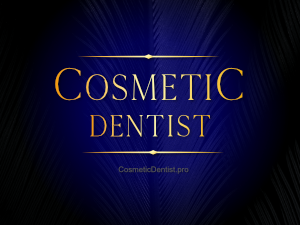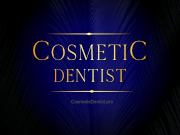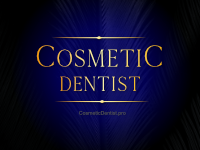Sleep Apnoea/ Snoring problems
Sleep Apnoea
Sleep Apnoea is a decrease or cessation of breathing during sleep, which may be obstructive, due to the frustration of breathing against blocked airways. Oxygen levels reduce, carbon dioxide levels increase and this causes the persons sleep level to become less deep but not necessarily wake up fully.
There are 3 man types of Sleep Apnoea;
- Obstructive sleep apnoea (OSA) – the most common type of sleep apnoea. It occurs when the soft tissue in the back of your throat relaxes during sleep and blocks the airway, often associated with loud snoring.
- Central sleep apnoea (CSA) – a far less common type of sleep apnoea that involves the central nervous system. It occurs when the brain fails to signal the muscles that control breathing. People that suffer with central sleep apnoea seldom snore.
- Complex sleep apnoea – a combination of obstructive sleep apnoea and central sleep apnoea.
Obstructive Sleep Apnoea (OSA) is a serious condition in which airflow from the nose and mouth to the lungs is restricted during sleep. It is often (but not always) associated with loud snoring.
The Major signs and symptoms of sleep apnoea
- Pauses in breathing
- Loud and chronic snoring, almost every night
- Choking, snorting, or gasping during sleep
- Waking up at night feeling short of breath
- Daytime sleepiness / fatigue, no matter how much time you spend in bed
Other warning signs and symptoms of sleep apnoea
- Insomnia or nighttime awakenings
- Waking up with a dry mouth or sore throat
- Going to the bathroom frequently during the night (nocturia)
- Forgetfulness and difficulty concentrating
- Uncharacteristic moodiness, irritability, or depression
- Morning headaches
- Restless or fitful sleep
- Impotence
What causes Sleep Apnoea?
While anyone can have sleep apnoea, you have a higher risk for obstructive sleep apnoea if you are:
- Over-weight
- Male
- Have a family history of sleep apnoea
- Are over the age of 50
- Are Black, Hispanic, or a Pacific Islander
- A smoker
- Affected by high blood pressure
- Someone with a neck circumference greater than 16 inches
- Taking certain medications (sleeping pills etc.) associated with relaxing the muscles around the throat
- Have a higher alcohol intake
Snoring
Whilst snoring can be considered antisocial and place potential pressures on relationships. The partial airway obstruction can have far reaching consequences on those with the affliction.
Sleep apnoea has many associated issues (medical co-morbidities) but perhaps the most acute outcome is that it can lead to extreme fatigue during the day which can cause people to fall asleep with little or no warning. This problem has been implicated in many fatal road accidents.
If you suspect that you may be affected by Obstructive Sleep Apnoea (OSA), please seek advice immediately!
Self -Treatment of Obstructive Sleep Apnoea / Snoring
Lifestyle changes that can help reduce Sleep Apnoea
- Lose weight. People who are overweight have extra tissue in the back of their throat, which can fall down over the airway and block the flow of air into the lungs while they sleep. Even a small amount of weight loss can open up your throat and improve sleep apnoea symptoms.
- Quit smoking. Smoking contributes to sleep apnoea by increasing inflammation and fluid retention in your throat and upper airway.
- Avoid alcohol, sleeping pills, and sedatives, especially before bedtime, because they relax the muscles in the throat and interfere with breathing.
- Exercise regularly. As well as helping you to lose weight, regular exercise can have a major effect on the duration and quality of your sleep. Aerobic and resistance training can help reduce sleep apnoea symptoms, while yoga is also good for strengthening the muscles in your airways and improving breathing.
- Avoid caffeine and heavy meals within two hours of going to bed.
- Maintain regular sleep hours. Sticking to a steady sleep schedule will help you relax and sleep better. Sleep apnoea episodes decrease when you get plenty of rest.
- Singing can increase muscle control in the throat and soft palate, reducing snoring and sleep apnoea caused by lax throat muscles.
Bedtime tips for preventing Sleep Apnoea
- Sleep on your side. Avoid sleeping on your back which makes it more likely for your tongue and soft tissues to obstruct your airway. Some people only experience sleep apnoea when sleeping on their back.
- The tennis ball trick. To keep yourself from rolling onto your back while you sleep, sew a tennis ball into a pocket on the back of your pajama top. Or wedge a pillow stuffed with tennis balls behind your back.
- Prop your head up. Elevate the head of your bed by four to six inches, or elevate your body from the waist up by using a foam wedge or special orthopaedic (cervical) head and neck pillow.
- Open your nasal passages at night by using a nasal dilator, saline spray, breathing strips, or a neti pot.
- Tighten the muscles that keep the mouth closed. Try chewing gum or holding a pen between your teeth for about 10 minutes before bedtime, or until your jaw starts to ache.
Throat exercises for Sleep Apnoea
Throat and tongue exercises may reduce the severity of sleep apnoea by strengthening the muscles in the airway, making them less likely to collapse. It may take several weeks before you start to notice the benefits. Try these exercises:
- Press your tongue flat against the floor of your mouth and brush top and sides with a toothbrush. Repeat brushing movement five times, three times a day.
- Press the length of your tongue to the roof of your mouth and hold for three minutes a day.
- Place a finger into one side of your mouth. Hold the finger against your cheek while pulling the cheek muscle in at same time. Repeat 10 times, rest, and then alternate sides. Repeat this sequence three times.
- Purse your lips as if to kiss. Hold your lips tightly together and move them up and to the right, then up and to the left 10 times. Repeat this sequence three times.
- Place your lips on a balloon. Take a deep breath through your nose then blow out through your mouth to inflate the balloon as much as possible.
- Repeat this five times without removing balloon from your mouth.
- Gargle with water for five minutes, twice a day.
- Lightly hold your tongue between your teeth. Swallow five times. Repeat this five times a day.
Treatments for ‘Central’ and ‘Complex Sleep Apnoea’ usually include:
- Treating the underlying medical condition causing the apnoea, such as a heart or neuromuscular disorder
- Using supplemental oxygen while you sleep
- Using breathing devices that will also manage obstructive sleep apnoea
- Medications are only available to treat the sleepiness associated with sleep apnoea, not the sleep apnoea itself.


